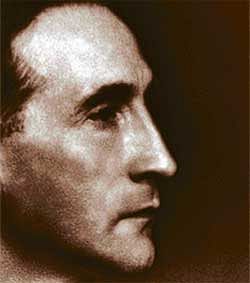
In 2004, Gordon — the sponsor of the Britain’s Turner prize — commissioned a survey of 500 artists, curators, critics and dealers to pick the most influential piece of modern art. To the astonishment of many, the one to top the list was Marcel Duchamp’s “artwork”, ‘Fountain.’
Among others, the ‘Fountain’ marched over two celebrated paintings of Pablo Picasso, ‘Les Demoiselles d’Avignon’ (1907) and ‘Guernica’ (1937), pushing those to second and fourth places respectively.
Andy Warhol’s ‘Marilyn Diptych’ (1962/ silkscreen and acrylic on canvas) painted as homage to the 36-year-old Hollywood actress following her suicide in August 1962 took the third place.
Other works which made it to the top 10 list were Henri Matisse’s ‘The Red Studio’ (1911 /oil on canvas) which showed an assortment of the artist’s painting, sculpture, and ceramics displayed in his studio; Joseph Beuys’ legendary three-day performance, ‘I Like America and America Likes Me’ (May 1974) during which the artist lived and communicated with a coyote (American jackal) in a small room at West Broadway in New York; Constantin Brancusi’s 98 ft.high sculpture ‘Endless Column’ (1938 /cast iron and steel), a memorial to young Romanians who sacrificed their lives fighting Germany in World War I; Jackson Pollock’s pulsating abstract painting ‘One: No 31’ (1950/ oil and enamel on unprimed canvas/ 8’ 10" high x 17’ 6 " wide); Donald Judd’s colossal installation, 100 untitled works in Mill Aluminum, created over a four-year period from 1982 to 1986 in the artillery sheds of Chinati, Texas; and Henry Moore’s famous ‘Reclining Figure’ (1929) carved in brown Hornton stone.

Twist in the tale
Marcel Duchamp's ‘Fountain’ was created in 1917 as one of his stimulating ‘readymades’; in actuality, it was nothing but a simple porcelain urinal purchased from a plumber’s shop and displayed as a work of art.
Duchamp (1887–1968), who was born in a town in northwestern France, came to be branded as an anti-artist, iconoclast and a prankster. He believed that an ordinary object (readymade) could be elevated to the dignity of a work of art by the mere choice of an artist. For him, the creative act was not performed by the artist alone; the spectator too brought the work in contact with the external world by deciphering and interpreting its inner qualifications and thus adding his contribution to the creative act.
There were many twists in the ‘Fountain’s’ tale. In 1917, Duchamp, 29, had come to America less than two years ago. Deciding to participate in the exhibition conducted by the Society of Independent Artists, he purchased a standard Bedfordshire model urinal from the JL Mott Iron Works, brought the object to his studio at 33 West 67th Street, laid it on its back, and signed it with a pseudonym, ‘R Mutt 1917’ before submitting it to the Society.
The outraged board members of the Society refused to display it at the exhibition, even though its constitution mandated acceptance of every entry. The object was, in fact, hidden behind a screen.
Protesting the decision, Duchamp resigned from the Society immediately after the exhibition, took his ‘artwork’ to well-known photographer Alfred Steiglitz and got it photographed. The photograph was published in the magazine, The Blind Man, with an accompanying editorial titled ‘The Richard Mutt Case’ (allegedly written by Duchamp himself!).
“Mr Mutt’s fountain is not immoral, that is absurd, no more than a bathtub is immoral,” read the editorial. “It is a fixture that you see every day in plumbers’ shop windows. Whether Mr Mutt with his own hands made the fountain has no importance. He chose it. He took an ordinary article of life, placed it so that its useful significance disappeared under the new title and point of view — created a new thought for that object.”
The story of the ‘Fountain’ did not end there. After photographing Stieglitz is supposed to have thrown it out as rubbish; thus the original ‘artwork’ got lost for ever.
Decades later, Duchamp used the photograph of the urinal to produce a replica and exhibited it in New York as the first reproduction of the ‘Fountain’ in 1950; two more individual pieces were made in 1953 and 1963; and a further eight in 1964. Duchamp signed each of these replicas on the back of the left flange ‘Marcel Duchamp, 1964’; a copperplate was also affixed on the base of each work etched with Duchamp’s signature. One of the 1964 replicas was sold for a whopping $1.7 million at Sotheby’s in November 1999.
In the course of its existence, the ‘Fountain’ came under some critical if comical circumstances. If Swedish artist Björn Kjelltoft urinated in the ‘Fountain’ in Stockholm in 1999, two Chinese performance artists, Yuan Chai and Jian Jun Xi, did the honours in 2000 at the newly opened Tate Modern! On January 4, 2006, French performance artist Pierre Pinoncelli went a step further and played out an act of creative destruction by striking the ‘Fountain’ with a small hammer and slightly damaging it at the Centre Pompidou in Paris. In return he received a suspended three-month jail sentence and an order to pay €200,000 ‘moral damages’ to the Museum and another €14,352 to repair the small hole that was caused to the poor porcelain!
None of these incidents have, however, dimmed the power of the ‘Fountain’ which is venerated as a great icon of modern art. And Duchamp (who gave up art and devoted the last decades of his life to playing chess) continues to be known as the cleverest artist of the 20th century who played a superlative prank with the ‘Fountain’.